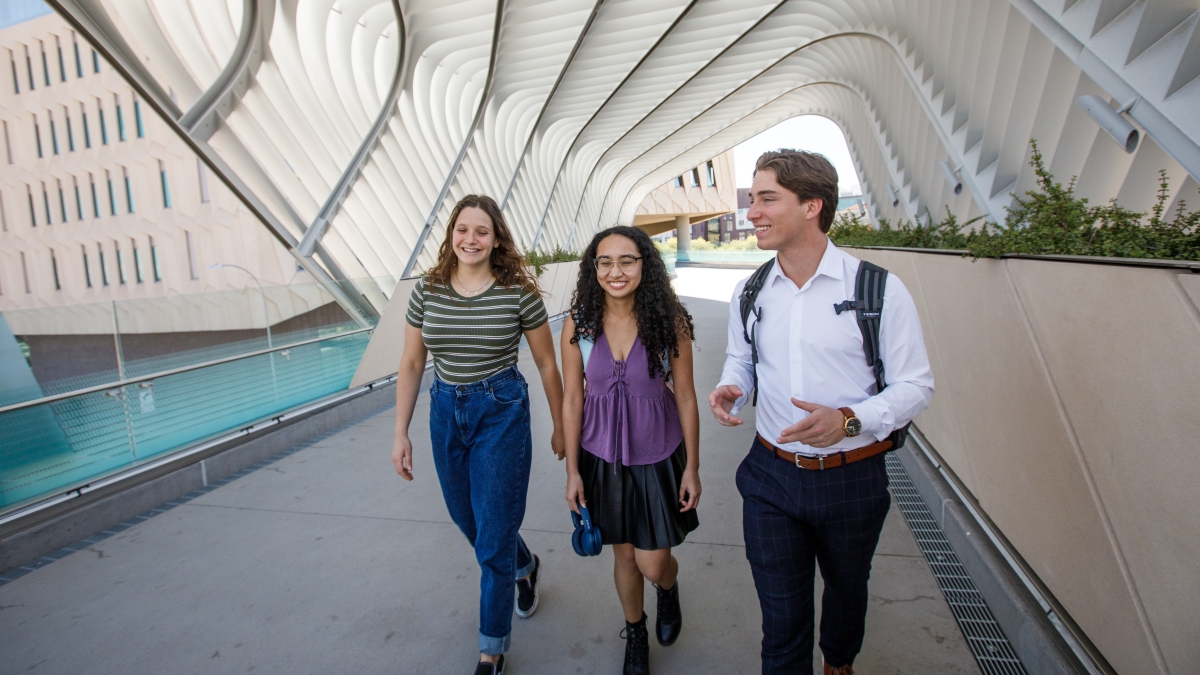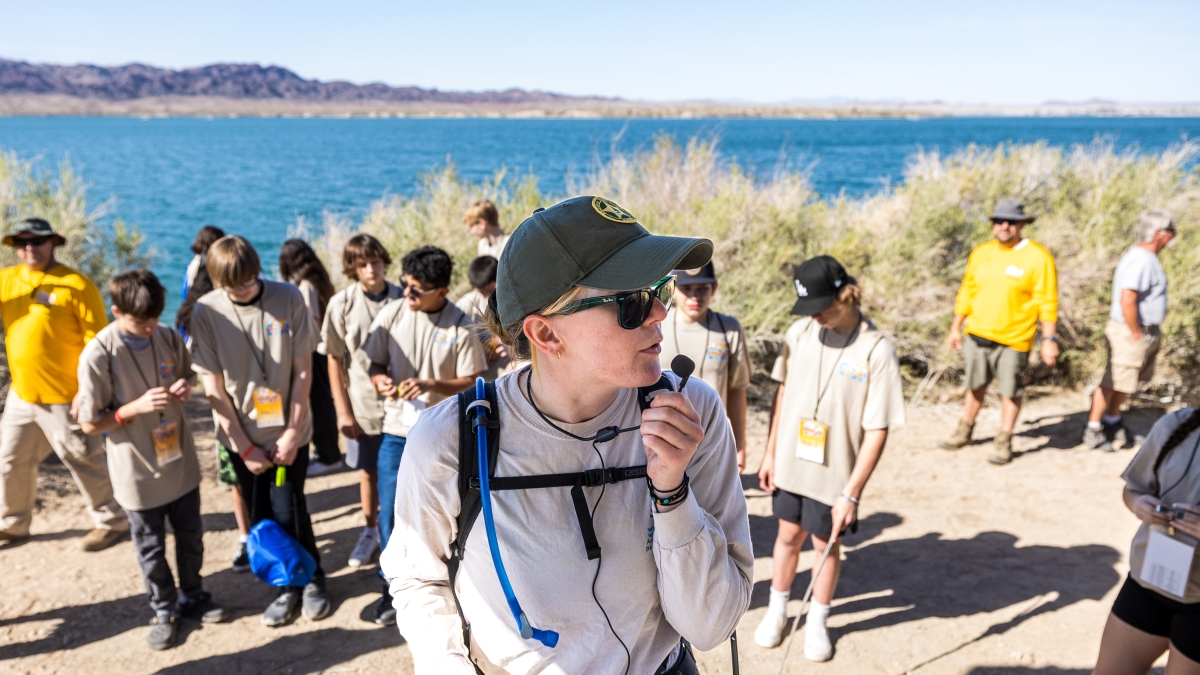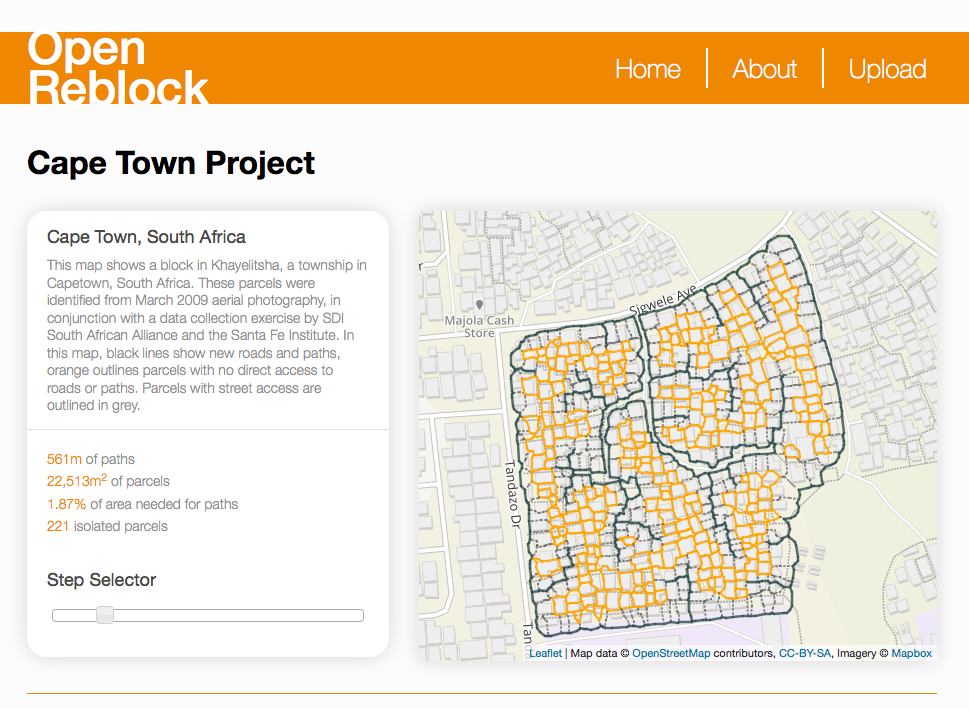Rethinking urban slums, block by block
Open Reblock project to map out way to expand access to services in slum communities, making them more resilient to effects of climate change, natural disasters

In our rapidly urbanizing world, more than a billion people living in slums lack access to essential services, such as water and sanitation, and to emergency response — a situation made even more perilous as climate change is expected to drive more frequent extreme-weather events in the coming decades.
Scientists from Arizona State University and the Santa Fe Institute (SFI), together with Slum Dwellers InternationalSlum Dwellers International is a network of community-based organizations of the urban poor in 33 countries and hundreds of cities and towns worldwide. (SDI), have been selected from hundreds of ideas to tackle an innovation challenge put forth by the Amplify Program: How might urban slum communities become more resilient to the effects of climate change?
For many urban slums, the key to resilience may lie in an integrated development approach called “reblocking.” This is a process by which slum communities physically rearrange themselves to create new streets and public spaces that provide access to every residence and workplace, facilitating the universal introduction of modern services and providing each household with an official address.
“Creating a street network that can facilitate movement within a neighborhood involves much more than simply tearing down structures that are in the way and bulldozing a road. There are social, economic, physical and even cultural considerations that must be integrated into the design of an effective street system,” said José Lobo, a professor in ASU’s School of Sustainability, who co-leads the Slums, Neighborhoods and Human Development Cities project with professor Luís Bettencourt at SFI.
“It is essential to develop a platform that includes both technology and community involvement, so that all of these considerations inform the design of a street network which is itself an essential ingredient for neighborhood development.”

Natural disasters hit urban slums, such as Soweto and (top) Khayelitsha townships in South Africa, particularly hard because of lack of access to basic services.
Photos by Matt-80 and (top) Chell Hill
The ASU-SFI-SDI collaboration is developing its reblocking platform as an open-source tool that will allow residents to re-plan their communities with minimal cost and disturbance. The platform allows users to map buildings, thoroughfares and services within their community and propose new layouts that most efficiently solve the problem of universal access.
“Creating visual digital images for a dialogue within the city and between communities is not a process presently in place,” said SDI chair Sheela Patel. “Enabling slum communities to generate these data, getting internal agreements within their members and presenting it to cities is of great value to the Slum Dwellers International affiliates.”
Users will be able to iterate and edit suggestions to coordinate community and local government objectives. Quantities such as street length and proximity to existing services provide real-time estimates for how much each street plan will cost. The website, OpenReblock.org (pictured below), includes a beta version of the urban planning tools that the project will now improve through better design and collaboration between slum communities, local governments, researchers and technologists.
“By providing a map that can be iterated to create a well-serviced neighborhood, we ensure that everyone involved is working from a common reference,” said Christa Brelsford, an ASU-SFI postdoctoral fellow who designed the Open Reblock algorithms and is helping develop the platform. She received a PhD from ASU's School of Sustainability.
With new support from the Global Resilience Partnership as part of the challenge, the project will create a more dynamic and user-centric design that will enable slum communities to easily generate, analyze and edit maps for providing access to each place of work and residence, and in this way set neighborhoods on a path of resilient development, as dictated by local knowledge and needs.
“The science and the algorithms behind Open Reblock allow you to create potential solutions faster and more systematically,” SFI’s Bettencourt said, “which we hope will speed up the process of converging on a great design that will more surely improve the lives of people in the neighborhood — according to their own preferences — and their city. It also provides a new perspective on the street plans of neighborhoods in all cities.”
The Amplify Urban Resilience Challenge will provide funding and design support for innovative solutions. The proposal from the ASU-SFI-SDI collaboration will receive support from the Global Resilience Partnership — which includes the Rockefeller Foundation, the Swedish International Development Cooperation Agency and the U.S. Agency for International Development.
The Urban Resilience Challenge is one of 10 innovation challenges under the Amplify Program that “find and support solutions to some of the world’s most pressing development issues.” The challenges are a collaboration between the international design group IDEO.org, OpenIDEO, and the Department for International Development.
More Environment and sustainability

Confusion complicates US recycling efforts
In most major cities and buildings, recycling bins can often be found alongside trash bins in an effort to encourage recycling. But is it working? According to the U.S. Environmental Protection…

ASU empowers students to build a thriving global future
At Arizona State University, leadership has made tremendous efforts to create programs and initiatives aimed at supporting a healthy planet and thriving future for all life — and now, more than ever…

Colorado River becomes an outdoor classroom for these middle school students
Griffin Freburg doesn’t usually look forward to science class. But on a sunny day in March, the eighth grader changed his tune. Concepts that were usually explained in long paragraphs in a textbook…
